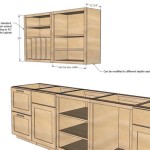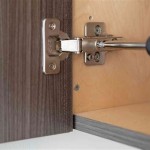How To Clean Kitchen Doors
Kitchen doors, subjected to daily use and exposure to cooking residues, require regular cleaning to maintain their appearance and hygiene. Different door materials necessitate specific cleaning approaches to avoid damage and ensure effective cleaning.
Cleaning Painted Kitchen Doors
Painted kitchen doors, whether wood or MDF, benefit from gentle cleaning. A solution of warm water and mild dish soap is generally sufficient. A soft microfiber cloth, dipped in the solution and wrung out thoroughly, should be used to wipe down the door surfaces. Avoid excessive moisture, which can seep into cracks and damage the wood or cause the paint to peel.
Stubborn grease spots can be treated with a paste of baking soda and water. Apply the paste to the affected area and allow it to sit for a few minutes before gently scrubbing with a soft cloth or sponge. For particularly tenacious grease, a dedicated kitchen degreaser can be used, following the manufacturer's instructions carefully.
After cleaning, rinse the doors with a clean, damp cloth to remove any soap residue and dry them thoroughly with a soft, dry cloth. This prevents watermarks and maintains the paint's finish.
Cleaning Wood Kitchen Doors
Unpainted or stained wood kitchen doors require different care than painted ones. Harsh chemicals and abrasive cleaners should be avoided, as these can strip the finish and damage the wood. A solution of warm water and a gentle wood cleaner, specifically formulated for kitchen cabinets, is recommended.
Apply the solution with a soft cloth, working in the direction of the wood grain. Avoid excessive moisture. After cleaning, dry the doors immediately with a clean, dry cloth.
Periodically, wood kitchen doors can benefit from a polish designed for wood furniture. This helps maintain the wood's luster and protect it from moisture and scratches. Always follow the manufacturer's instructions when using wood polish.
Cleaning Laminate Kitchen Doors
Laminate kitchen doors are relatively low-maintenance and easy to clean. Warm soapy water is usually sufficient. Avoid abrasive cleaners and scouring pads, as these can scratch the laminate surface.
Wipe down the doors with a soft cloth dampened with the soapy water, then rinse with a clean, damp cloth. Dry thoroughly with a soft cloth to prevent watermarks.
For stubborn stains or sticky residue, a solution of equal parts white vinegar and water can be effective. Apply the solution to the affected area and let it sit for a few minutes before wiping clean.
Cleaning Glass Kitchen Doors
Kitchen doors with glass panels require cleaning both the glass and the surrounding frame. The frame can be cleaned according to the material it's made of, following the instructions outlined above for painted, wood, or laminate doors.
The glass panels can be cleaned with a standard glass cleaner. Spray the cleaner directly onto the glass and wipe clean with a lint-free cloth or paper towel. For a streak-free shine, use a clean, dry microfiber cloth for the final wipe.
Cleaning Metal Kitchen Doors
Stainless steel kitchen doors are common in modern kitchens. They can be cleaned with warm soapy water or a dedicated stainless steel cleaner. Always wipe in the direction of the grain to avoid streaks. Avoid abrasive cleaners and scouring pads, which can scratch the surface.
For stubborn fingerprints or smudges, a solution of white vinegar and water can be used. Spray the solution onto the door and wipe with a clean, dry cloth. Alternatively, a specialized stainless steel cleaner can be used, following the manufacturer’s instructions.
Maintaining Clean Kitchen Doors
Regular cleaning is key to maintaining the appearance and longevity of kitchen doors. Wiping down the doors after each use helps prevent the buildup of grease and grime. Addressing spills and splatters immediately prevents them from hardening and becoming more difficult to remove.
Regularly inspecting the doors for signs of wear and tear, such as chipped paint or loose hinges, allows for timely repairs and prevents further damage. Proper cleaning and maintenance ensure kitchen doors remain functional and aesthetically pleasing for years to come.
Addressing Mold and Mildew
In humid environments, kitchen doors can be susceptible to mold and mildew, particularly in areas around the sink or dishwasher. Regular cleaning and proper ventilation help prevent this. If mold or mildew appears, a solution of bleach and water (1 part bleach to 10 parts water) can be used. Always wear gloves and ensure adequate ventilation when using bleach.
Apply the solution to the affected area and let it sit for a few minutes before scrubbing gently with a soft brush. Rinse thoroughly with clean water and dry completely. For persistent mold or mildew problems, consult a professional cleaning service.

How To Clean Kitchen Cabinet Doors

How To Clean Kitchen Cupboard Doors Ovenclean

How To Clean Wood Kitchen Cabinets

How To Clean Kitchen Cabinets 9 Basics Bob Vila

How To Clean Your Replacement Kitchen Doors

How To Clean Gloss Kitchen Doors Blog Warehouse

How To Clean Sticky Grease Off Kitchen Cabinets Ovenclean

How To Clean Kitchen Cabinets Everyday Skate

How To Remove Grease From Kitchen Cabinets 3 Methods Bob Vila

How To Clean Kitchen Cabinet Doors Singapore Cabinets
Related Posts








